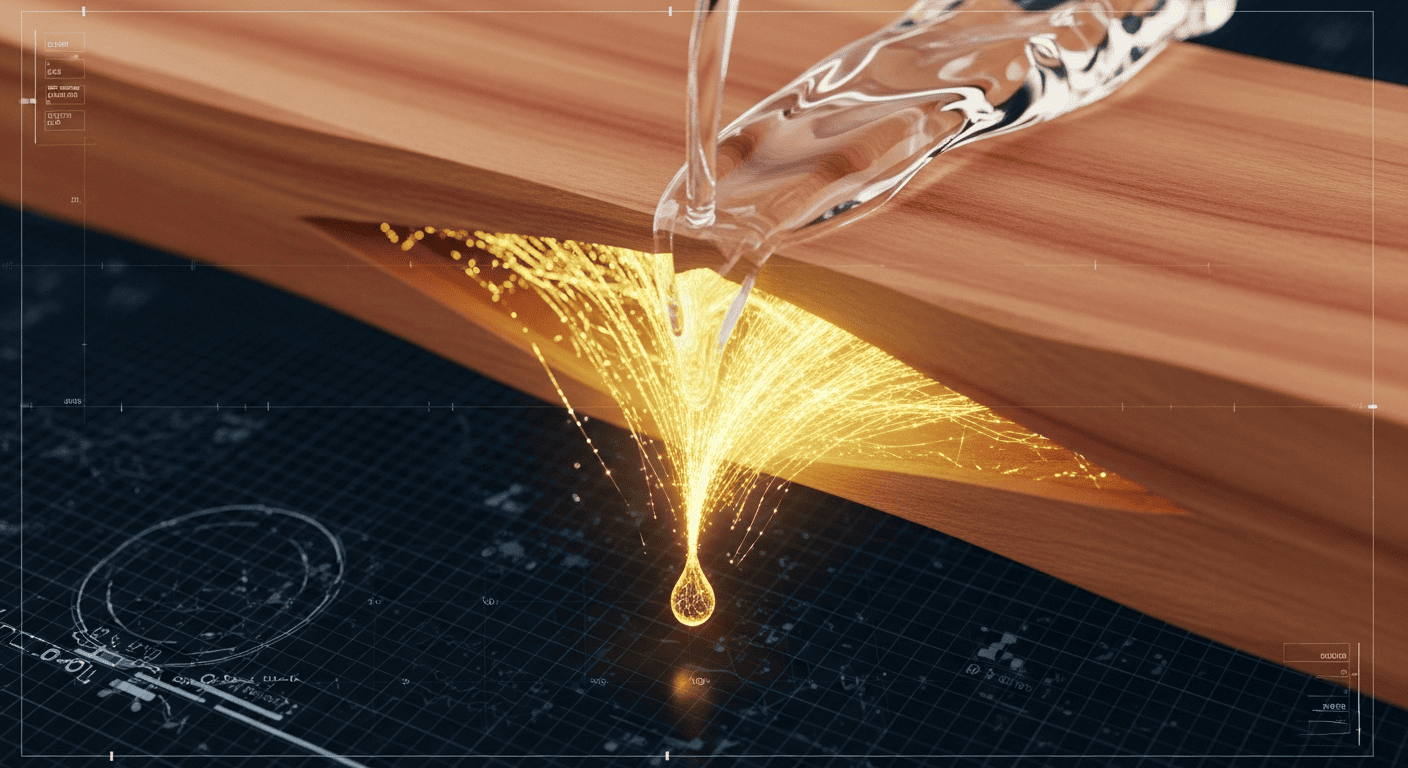Within every piece of wood lies a silent, complex story told in the language of aromatic molecules. For centuries, perfumers have sought to translate this story, but their primary tool has been the blunt instrument of steam distillation. This method, a process of intense heat and pressure, essentially shouts at the wood until it gives up its secrets, inevitably damaging and distorting the narrative in the process.
A far more elegant conversation is now possible, thanks to the technological poetry of supercritical CO2 extraction. This advanced technique uses carbon dioxide in a phantom-like state that is neither liquid nor gas, allowing it to slip through the wood’s cellular structure like a ghost. It doesn’t cook or coerce; it gently persuades the aromatic essence to come out, capturing a scent of almost impossible realism.
The result is a fragrance material that is not a memory of the wood, but its living presence in liquid form. This incredible achievement in extraction, however, is only half the battle in delivering a perfect scent experience. The next crucial challenge involves protecting delicate fragrance molecules from degradation after they have been captured and bottled, ensuring the story remains intact.
The Crude Signature of Heat
Steam distillation, for all its historical significance, is fundamentally a process of controlled thermal chaos. It subjects the delicate cellular structure of wood to a punishing ordeal of boiling water and high pressure, a shock that irrevocably alters the material’s chemical signature. The goal is to capture the scent, but the very method used ensures the scent that emerges is a compromised version of the original.
This thermal assault does more than just release the desired oils; it actively changes the chemical makeup of the wood’s essential oil. The most fragile and effervescent top notes, which give a wood its fresh, “living” character, are often the first casualties, boiled away into nothingness. What remains is a scent profile that is heavier, often flatter, and tinged with the smoky artifacts of its own traumatic birth.
Consequently, perfumers have traditionally been forced to compose with scents that are incomplete, working with an ingredient that has suffered from unavoidable heat damage. They have become masters at reconstructing the ghost of a scent, skillfully blending these thermally scarred oils to imitate the complexity that was lost during the extraction itself.
The Ghost in the Machine: Supercritical CO2
The science behind this gentle extraction hinges on transforming common carbon dioxide into an extraordinary tool. Under precisely controlled pressure and a surprisingly low temperature, CO2 enters its supercritical phase—a strange, hybrid state of matter. It is no longer a gas, nor is it a liquid; it exists as something in between.
In this state, the supercritical fluid behaves like a molecular phantom. It possesses the density of a liquid, giving it the power to dissolve oils and resins, but it flows with the ethereal freedom and permeating ability of a gas. This allows it to effortlessly pass through the fibrous matrix of the wood, unlocking and carrying away the aromatic compounds without causing any structural or thermal damage.
The genius of this technique is its clean exit. Once the extraction is complete and the pressure is released, the CO2 instantly reverts to a gas and vanishes completely, leaving no residue, no solvent trace, and no chemical footprint.
- It operates at temperatures that preserve the most fragile scent molecules.
- It uses a solvent that is non-toxic, non-flammable, and inert.
- It yields an extract of absolute purity with zero contamination.
- It allows for selective extraction of specific molecules by fine-tuning pressure.
Olfactory Realism: The Scent of Truth
To compare a CO2-extracted wood oil to its steam-distilled counterpart is to witness the difference between a description and the thing itself. The CO2 extract offers a full-spectrum, holographic scent, teeming with the subtle nuances and vibrant top notes that are typically annihilated by heat. The cool, mineral-like notes, the creamy, lactonic undertones, and the rich, resinous heart are all present and accounted for.
This breathtaking authenticity comes from the method’s ability to carry heavier, less volatile molecules that steam simply leaves behind. These larger compounds are crucial to the scent’s texture, richness, and staying power on the skin. This gives the artist access to a palette that contains not just colors, but textures and temperatures. The result is not just a note, but an entire environment captured in a bottle.
This heightened realism frees the perfumer from the task of compensating for a flawed ingredient. Instead of trying to reconstruct what was lost, they can now create with a material that is whole and true. This allows for the creation of wood-centric fragrances that are cleaner, more vibrant, and possess a depth that feels profoundly more natural and alive.
The Promise of a Cleaner Process
Beyond the artistic advantages, supercritical CO2 extraction stands as a pillar of modern green chemistry. The technology operates within a closed-loop system, meaning the carbon dioxide is continuously recycled and reused, not released into the atmosphere. The CO2 itself is often sourced as a byproduct from other industries, effectively upcycling an industrial emission into a high-precision tool.
For the consumer, the most significant benefit is the guarantee of an impeccably pure product. Methods that use chemical solvents always carry the risk of leaving trace amounts of those solvents in the final extract. With CO2, this risk is completely eliminated, as the solvent simply transforms back into a harmless gas and disappears, leaving behind only the pure essence of the wood with a zero solvent footprint.
This technology represents a virtuous cycle: it is better for the planet, safer for the consumer, and yields a demonstrably superior ingredient for the artist. It is a quiet revolution that elevates the standards of the entire industry, pushing it toward a future that is cleaner, purer, and more faithful to the true scent of nature.
Frequently Asked Questions
Both are derived from natural sources, but a CO2 extract is widely considered to be a more “true” or “complete” representation of the natural material. Because it is not altered by heat, it delivers a scent profile that is virtually identical to the one found inside the living plant, capturing a level of authenticity that distillation cannot match.
Absolutely. It is especially prized for extremely delicate botanicals. For materials like fresh spices (cardamom, pink pepper) and fragile flowers (jasmine, lilac), CO2 extraction can capture a vibrant, “fresh-from-the-stem” character that is lost in the heat and water of steam distillation, resulting in an uncannily lifelike aroma.
No, the process is environmentally sound. The CO2 used is captured from existing industrial processes—it is not newly created. This captured gas is then recycled continuously within the extraction equipment in a closed loop. No new CO2 is produced or released, making it a sustainable and responsible technology.

